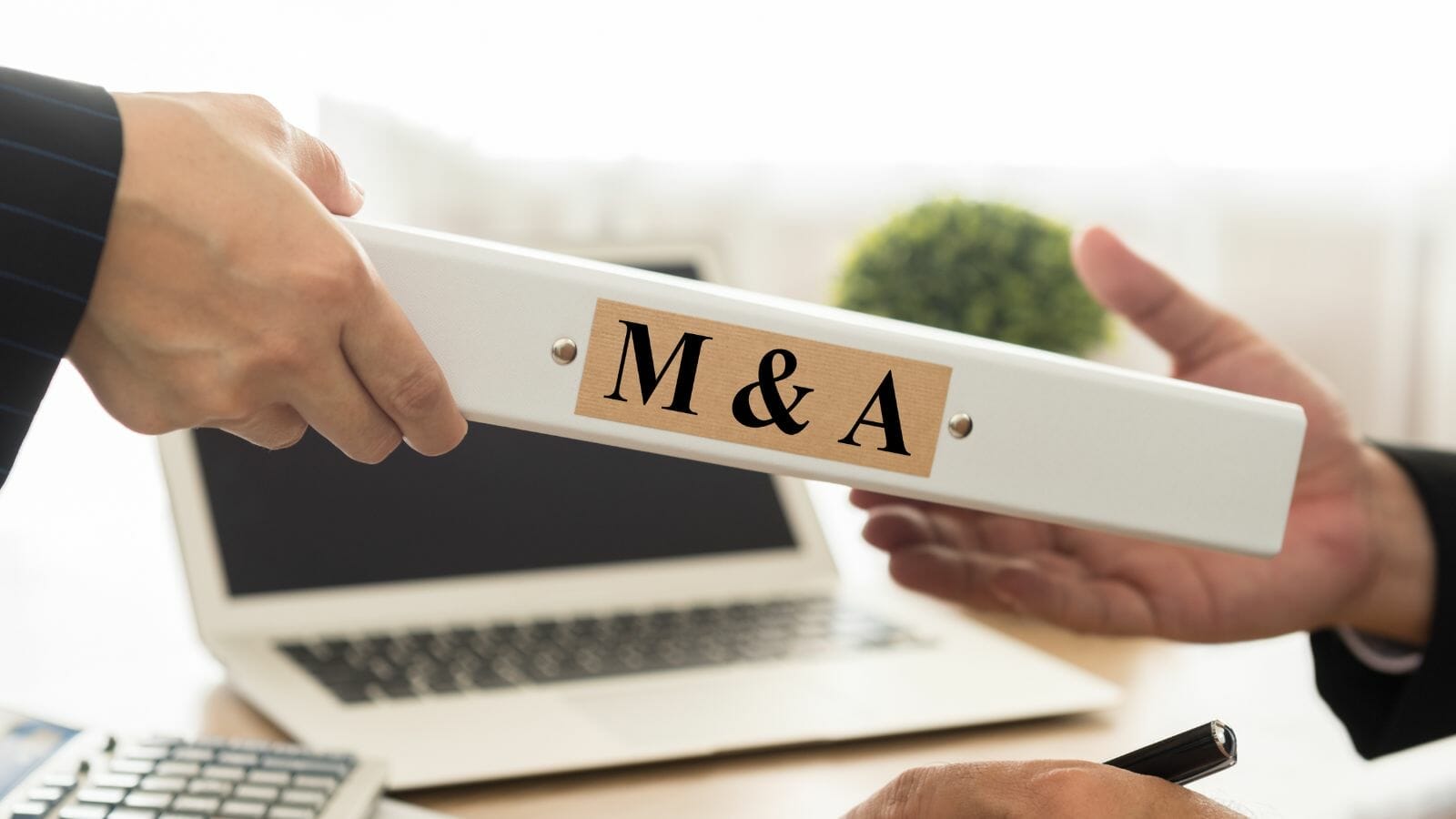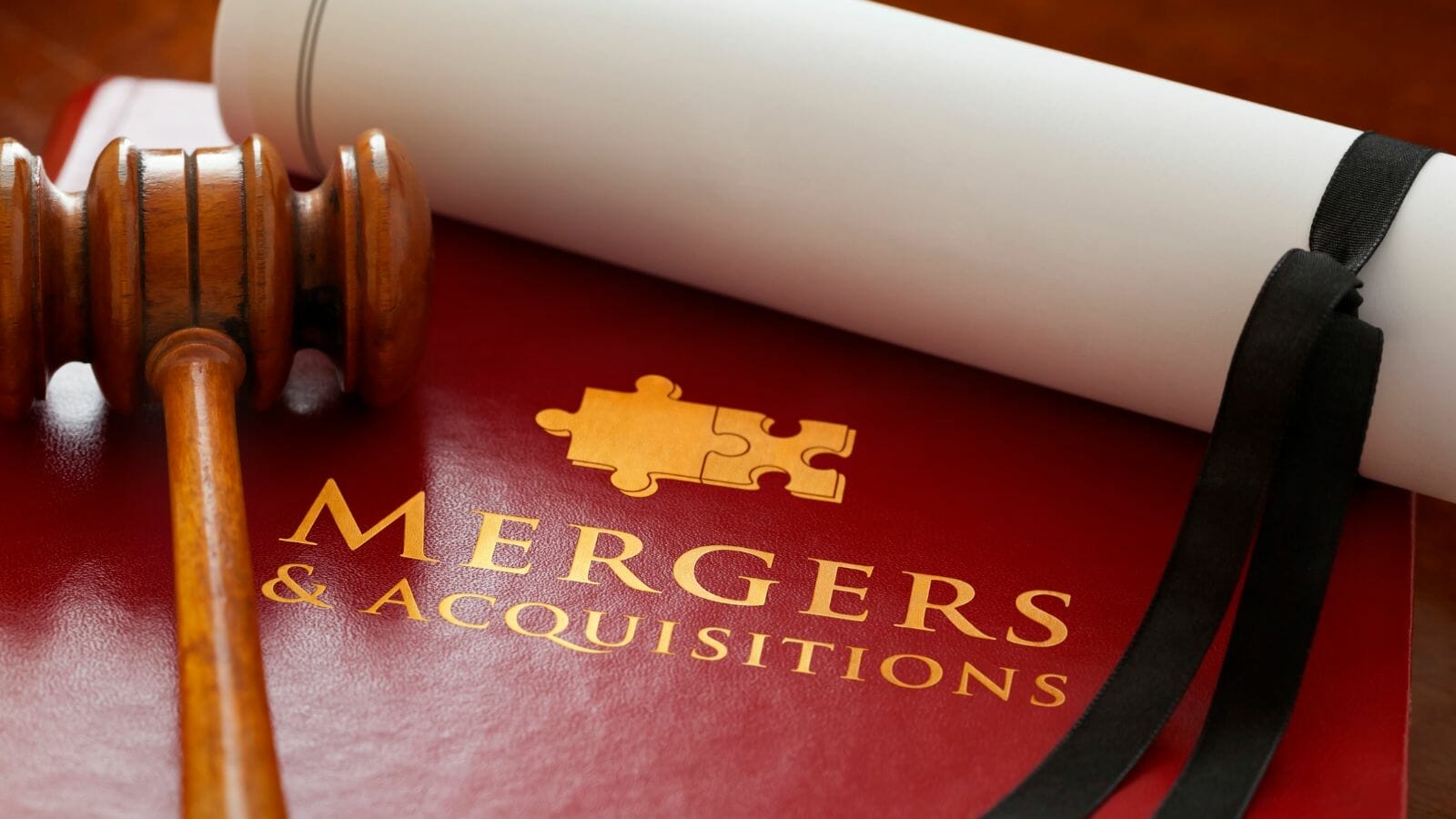Updated 7/24/2023
“If you aggregate all of our stock-only mergers (excluding those we did with two affiliated companies, Diversified Retailing and Blue Chip Stamps), you will find that our shareholders are slightly worse off than they would have been had I not done the transactions. Though it hurts me to say it, when I’ve issued stock, I’ve cost you money.”
Warren Buffett, 1997 Shareholder Letter
Warren Buffett is the best capital allocator in history, arguably. He prefers to buy companies using cash because he understands that it reduces ownership in his company for shareholders when he uses stock.
He likens it to acquiring a .350 hitter in baseball, an excellent acquisition for a .380 hitter, not such a great acquisition now.
How a company purchases or merges with another company impacts the returns for shareholders, not only in the short but also in the long term. Learning the ins and outs of the different types of acquisitions will help us anticipate impacting our investments.
In today’s post, we will learn:
- How One Company Buys Another: The Basics
- What is a Stock and Cash Acquisition?
- What Are the Pros and Cons of A Stock Vs. Cash Acquisition?
- What is a Mixed Deal in Acquisitions?
Let’s dive in and learn more about cash vs. stock acquisitions.
How One Company Buys Another: The Basics
Simply, mergers and acquisitions equal when two companies combine to form one. The reasons for these combinations remain multifold, but the main goals remain revenue and/or cost synergies.

The combined companies can grow revenues faster by combining products, product innovation, reaching new markets, better supply chains, marketing, and many more.
There are also reductions in costs, such as eliminating duplicate positions, reducing inventories, and better distribution.
An acquisition happens when one company purchases another with cash, stock, or a combination of the two. With an acquisition, there is no change management, and typically, a name is adopted, either the acquirers or acquired or a new name altogether.
For example, when Norwest Bank acquired Wells Fargo, they changed the new company’s name to Wells Fargo because it had better brand recognition, despite being a smaller company. Recently BB&T Bank purchased Sun Trust Bank, and they changed the combined companies’ names to Truist Bank. Side note, who thought that was a good choice??
A merger combines two companies, typically with one company purchasing a certain amount of the acquired company’s stock in exchange for the acquirer’s stock.
Both mergers and acquisitions remain similar in that when one company finds benefits from combining with another company in a way that increases shareholder value for both groups. Many lump the two actions, mergers, and acquisitions, together because of these similarities as M&A.
Acquisitions, in theory, are when both companies convert their respective stock to those of the new, combined company. In practice, the two companies agree that one company will purchase another’s stock using stock, cash, or a combination of both.
Mergers remain a little different beast, as they don’t equal one-for-one.
For example, exchanging one share of Facebook for one share of Snapchat wouldn’t equal one for one. Instead, if Facebook merged with Snapchat, Snapchat shareholders would receive a portion of shares expressed as a ratio. The real number might be 2.75, where one share of Snapchat would cost you 2.75 shares of Facebook. That is purely for example purposes; no idea if either would ever merge.
What Is an All Stock or All Cash Acquisition?
In acquisitions, buyers usually pay with cash, but the buyer can also offer the seller some stock as payment. For example, when Microsoft and Salesforce were competing to buy LinkedIn in 2016, both companies considered offering a portion of their stock. Ultimately, Microsoft was able to secure the deal using an all-cash deal.

When one company acquires another for an all-cash deal, several things occur.
First, shareholders of the acquired company will probably see the prices of their investment rise, sometimes as much as 30% or more.
In the background, the company negotiates the target price before the deal’s announcement, with a target price of the acquired announced at that time. If Wall Street likes the deal, the acquired company’s share price will rise. Most acquisitions come with at least a 30% premium attached, and Wall Street will vote for their approval by increasing or lowering the share price of the acquired company.
Much of the increased share price comes from the announced synergies. For example, if Microsoft announced cost savings from acquiring LinkedIn, those savings would come from cutting staff or reducing technology or systems. Of course, layoffs are no fun for the employees, but lower costs mean greater profit margins for the new company.
Cash Source
So where does all the cash come from, you might be asking?
If the acquirer doesn’t have all the bank cash, there are several options to raise the required funds.
Bonds or equity offerings are typically the first choices a company can make. By offering a bond (debt), the company entices investors to give them cash in exchange for a fixed interest rate over the bond’s life, plus the return of their principal at the maturity date.
If the company isn’t public at the time of the acquisition, it can go public as an IPO, which sells its shares on the open market in exchange for cash. Existing companies can offer their shares on the open market for cash, often called an equity offering.
The other option is the good old-fashioned loan. Companies have the option to borrow money from a bank or financial company. But, in high-interest rate environments, the interest rate payments can be prohibitive to acquire.
The complexity of getting a loan for an acquisition is quite high; you have to consider that many acquisitions are in the billions, and then adding that much high-interest-rate debt to the balance sheet is not a good look. The increased debt load and higher interest payments can also impact the company’s cash flows, impacting management’s capital choices like acquiring another company.
Shareholder Approval
Regardless of the choice for raising cash, no acquisition or merger is complete until the shareholders approve the deal, which happens during a shareholder meeting held once a year.
Instead of raising cash in all-stock deals, the acquirer uses their stock as the currency for the acquisition. In an all-cash deal, both shareholders assume the risk of any default. And in an all-stock deal, the risk is spread between the two camps of shareholders.
Example
Recently, Goldman Sachs announced they would acquire GreenSky, the large fintech platform, for $2.24 in an all-stock deal. As part of the agreement, GreenSky shareholders will receive 0.03 shares of Goldman Sachs for each share of GreenSky they own. At present, this represents a share price of $12.11 and a market cap of $2.28 billion for GreenSky, which was trading at $7.70 or a market cap of $1.38 billion at the time of the announcement. That is an increase of 57% in share price!
That is typical for acquisition in today’s market, but the true value for the shareholders comes down the road when they try to sell their shares of Goldman if the acquisition bears fruit, depending on the anticipated synergies. For example, Goldman had instead paid cash for the transaction and anticipated cost synergies of $300 million.
We could calculate the transaction value for shareholders by subtracting the anticipated synergy of $500 million from the premium paid for Greensky of $2.28 billion minus $1.38 billion equals $900 million. Then the shareholder value created from the all-cash transaction would be $900 million minus $300 million, which gives us a value of $600 million.
For a deeper dive into this concept, check out the fantastic article from Harvard Business Review.
What Are the Pros and Cons of A Stock Vs. Cash Acquisition?
There are multiple pros and cons to stock and cash deals for acquisitions.

Pros of the Cash Deal:
- The first pro is the quickness of the transaction. Cash deals tend to close faster and face fewer hurdles to getting the deal done. An analysis from the M&A Research Center at the University of London determined that the failure rate of all-cash deals was 2.9%, compared to all other forms’ rate of failure at 4.4%.
- Another benefit is the simplicity of what shape the new company will take. In an all-cash deal, the roles of the two managements are clear, and the exchange of money for shares completes a simple change in ownership. Indeed, the acquirer controls the deal and dictates who is in charge and how systems will merge.
Cons of the Cash Deal:
- Financing can become a headache for the acquirer. If the company doesn’t have enough cash, it must decide how to raise it. Bond offerings are cheaper but take longer, whereas equity offerings are more expensive but quicker to fulfill. There is also the issue of using cash from operations or reserves, which could deplete those reserves or cash flows and impair the company.
- Taxes, everybody’s favorite, are an issue in all-cash transactions. When the seller receives their cash, it becomes a taxable event, with the seller having to pay taxes on at least one level of the capital gain, depending on the seller’s tax situation, which could be quite expensive.
Pros of the All-Stock Deal:
- The biggest perk for using all-stock to buy another company is the acquirer keeping its cash hoard. Or, if they are strapped for cash at the time, they can use its stock to make the acquisition, saving the hassle of raising funds. Using stock instead of cash, the company can save its dry powder for any other situation.
- The shareholders of the acquired company receiving stock instead of cash can hold onto that stock and defer any capital gains from the acquisition. The stock-for-stock deal is exempt from tax implications until shareholders sell their shares or deferred capital gains tax status.
- A bonus is the potential for new growth from the new entity and share appreciation over time.
- The acquirers of the new company assume control of the entity and have to make all the operational decisions in the future. In contrast, minority owners can sit back and wait for the profits to roll in.
- Risk is shared between the acquirer and the acquired company.
Cons of All-Stock Deals:
- The dilution of shares can reduce profitability and valuation metrics, leading to a decrease in share price from unknowing retail investors. When a company issues shares, it raises the share count, driving up the P/E ratio. And retail investors who don’t realize an acquisition took place see a higher P/E ratio and determine whether the company is too expensive and sells or fails to invest.
- There is the risk that the share price of your new shares could tank before finalizing the deal, meaning your value is less.
- The nature of the fractional shares the seller receives makes the above risk a little more real. If the price of shares comes in partial shares, there is a risk that those partial shares will be floating or fixed. Suppose the fractional shares have a structure as a fixed exchange ratio. In that case, no matter what happens to those shares of Goldman Sachs between announcement and closing, the ratio will remain 0.03 if the price of Goldman tanks between that period, those 0.03 shares of Goldman are worth far less.
What is a Mixed Deal in Acquisitions?
In the M&A world, there is also a method of activity known as the mixed deal, a form of payment in which the acquirer uses a mix of cash and stock to complete the purchase.

For example, Intuit recently announced acquiring Mailchimp for $12 billion in cash and stock. Intuit will do the deal with equal parts stock and cash, with Intuit funding the cash portion with cash on hand and debt raises of $4.5 billion to $5 billion.
The company’s method of funding an acquisition can provide some interesting insights. For example, if Intuit believed its stock had become overvalued, it would likely prefer to conduct the Mailchimp transaction with entirely Intuit stock. Likewise, if Intuit strongly believes it can realize substantial synergies from the Mailchimp deal, it would prefer an all-cash deal, so Intuit could fully realize all the potential profits.
Today, the mixed offering deal is the prevalent method, and for major deals, it is often the only realistic way to finalize the transaction. The pandemic has given way to an increase in all-cash deals with rock-bottom interest rates; in 2020, Bloomberg Law reported that 73% of all M&A deals were all-cash, the second-highest since 2007.
When interest rises, those deals will return to the mixed deal offerings of the past, especially as equity valuations remain elevated.
There are a few factors we need to consider when thinking about M&A payment methods:
- The size of the deal matters because the bigger the deal, the bigger the acquirer will use more stock than cash to fund the deal. Unless you are Microsoft and have billions, companies will use stock and a mix of both to fund acquisitions. Using a mix helps protect free cash flow, which a large cash outlay could threaten. And the mix of stock and cash helps lower the need to add extra debt to the balance sheet.
- Ownership dilution is also a consideration of using a mix for acquisitions. To avoid hostile takeovers, acquirers might prefer to retain more ownership and use more cash for their acquisitions.
- Tax considerations because when using large amounts of cash in acquisitions, the acquirer must pay the acquired immediate tax payments, which can add to the costs of the acquisitions. You lessen that tax liability by using stock as part of the mix.
- They protect the free cash flows by not tying up large amounts of cash to purchase another company. Using a mix of stock and cash helps preserve the company’s cash flows and gives them more flexibility to do other things to grow.
A great recent example of a mixed offering in M&A is Facebook’s acquisition of WhatsApp. Facebook bought WhatsApp for $19 billion by using mixed offering payments, offering WhatsApp $4 billion in cash and $12 billion in Facebook stock, and granting WhatsApp employees $3 billion in reserved stock units (RSU).
Investor Takeaway
Learning the ins and outs of M&A is quite helpful as the activity continues to accelerate in the bull market.
Chances are, we will own a company that will be acquired now or in the future, and understanding how they for those acquisitions will help us understand how it can impact our investment.
There are multiple serial acquirers in the market, companies such as:
- Cisco
- Microsoft
- Constellation Software
- SS&C
They are all fantastic businesses that use acquisitions and mergers to help them grow, and these companies do a great job of integrating those acquisitions.
Cash vs. stock acquisitions greatly impact our future returns, and hopefully, this post helped you better understand how they work and the possible impacts. Mergers and acquisitions are a regular part of the market, and many companies use that activity as an integral part of capital allocation. Clearing the fog around these transactions was my goal.
And with that, we will wrap up today’s discussion.
As always, thank you for taking the time to read today’s post, and I hope you find some value while reading. If I can further assist, please don’t hesitate to reach out.
Until next time, take care and be safe out there,
Dave
Related posts:
- Mergers and Acquisitions: Easy Basics for Beginners Updated 7/6/2023 Global mergers and acquisitions (M&A) volumes hit a record high in 2021, overtaking 2020’s deals. According to Refinitiv data, the total volume of...
- M&A As A Growth Strategy Updated 7/6/2023 Merger and acquisition activity drives much more growth than investors realize, and many companies practice mergers and acquisitions or M&A as their main...
- Financial Impact of Mergers and Acquisitions: Amazon’s Purchase of Whole Foods Updated 8/7/2023 Companies expend more energy on mergers and acquisitions (M&A) than any other means of capital allocation. For many companies, such as Cisco and...
- Simple Merger and Acquisition Terms for Beginners Updated 7/6/2023 Learning M&A is a little like learning another language. Understanding the different terms associated with M & M&A will go a long way...
